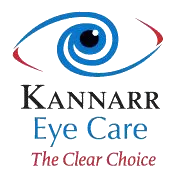Protect your eyes this summer with these important tips.
Read more-
How to Avoid Sunburned Eyes
Category: Newsletters
-
5 Healthy Habits To Pick Up for Better Eye Health
Category: Newsletters
-
How To Prevent Computer Vision Syndrome
Category: Newsletters
Does computer vision syndrome make your eyes feel sore and dry after using your digital devices? These tips can help improve the comfort of your eyes.
Read more -
How To Properly Care For Your Contact Lenses
Category: Newsletters
Do you wear contact lenses? These dos and don'ts can help you protect you avoid common contact lens problems.
Read more -
Preparing For Presbyopia Awareness Month in April
Category: Newsletters
Do you have to hold books farther and farther away from your face to see clearly? You may have presbyopia.
Read more -
The Development of Your Child’s Eyes (Each stage outlined from infancy to adulthood)
Category: Newsletters
-
How Digital Eye Strain Can Lead To Irritated Eyes
Category: Newsletters
Are your eyes uncomfortable after using your laptop or tablet for a few hours? You may have digital eye strain.
Read more -
Protecting Your Vision While At Work
Category: Newsletters
Are you at risk of an eye problem at work? These tips will help you avoid injuries and discomfort.
Read more -
What Are Eye Allergies? Symptoms and Treatments
Category: Newsletters
-
New Year, New Vision in 2020
Category: Newsletters
-
How To Read Your Eyeglass Prescription
Category: Newsletters
-
Are Floaters A Sign Of Something Bigger?
Category: Newsletters
Worried about floaters? Find out when this common vision symptom can be a sign of a serious problem.
Read more -
Allergies
Category: Protecting Your Eyes
Caused by the same irritants as hay fever, runny nose, coughing, and sneezing, eye allergies commonly affect those who suffer from other allergy symptoms. Not only do eye allergies cause discomfort, but they can also interfere with daily activities. Eye Allergy Causes Medically referred to as allergic
Read more -
How To Protect Your Eyes While Wearing Halloween-Themed Contact Lenses
Category: Newsletters
Spooky novelty contact lenses can make your Halloween costume even scarier, but are they safe?
Read more -
Air Pollution Affects Your Lungs But It Can Also Affect Your Eyes
Category: Newsletters
Are your eyes red, dry or itchy after spending time outside? Air pollution may be the cause.
Read more -
Should You See a Vision Therapist?
Category: Newsletters
Do you experience frequent headaches, double vision or motion sickness? You may benefit from a visit to a vision therapist.
Read more
